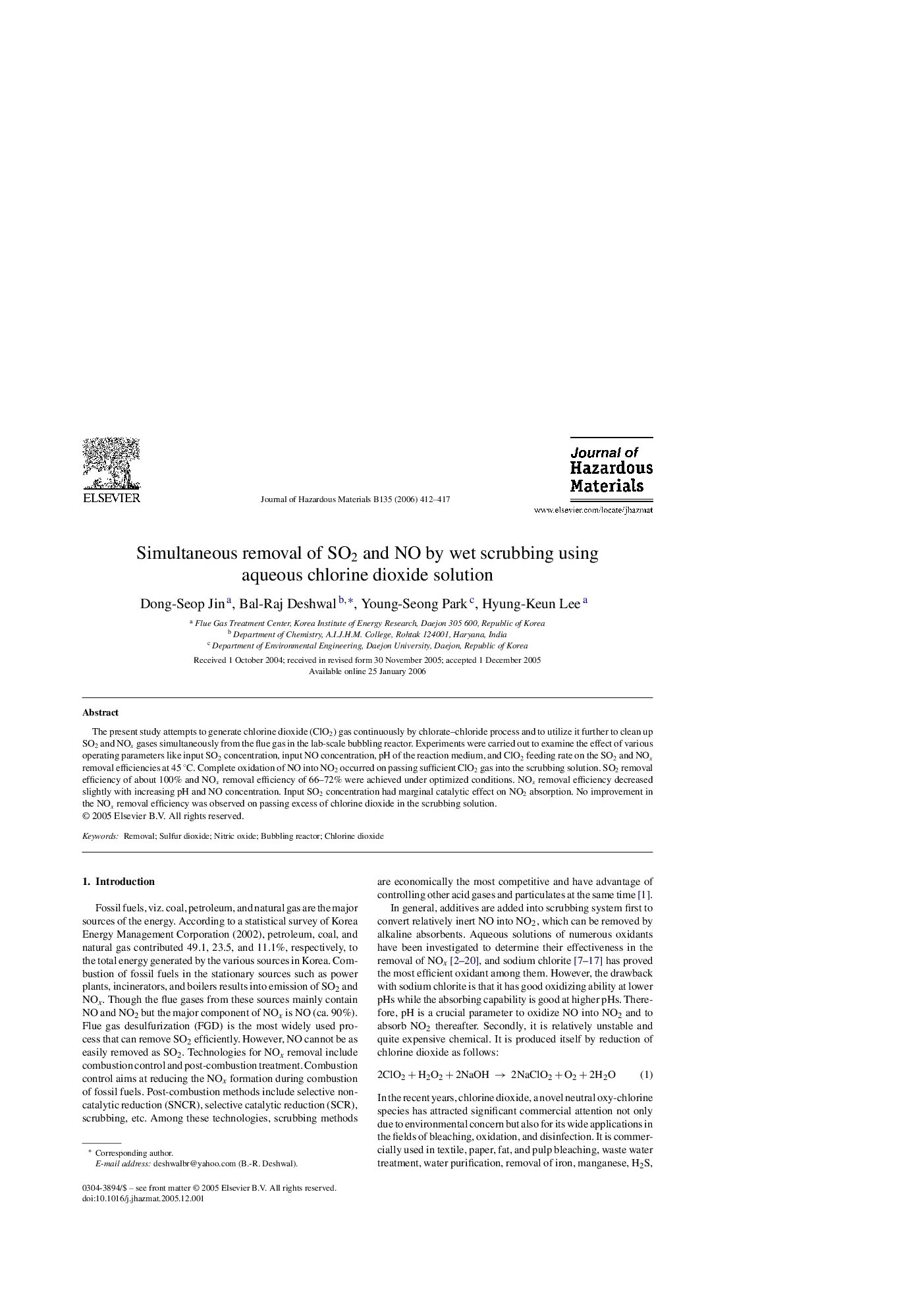| Article ID | Journal | Published Year | Pages | File Type |
|---|---|---|---|---|
| 585773 | Journal of Hazardous Materials | 2006 | 6 Pages |
The present study attempts to generate chlorine dioxide (ClO2) gas continuously by chlorate–chloride process and to utilize it further to clean up SO2 and NOx gases simultaneously from the flue gas in the lab-scale bubbling reactor. Experiments were carried out to examine the effect of various operating parameters like input SO2 concentration, input NO concentration, pH of the reaction medium, and ClO2 feeding rate on the SO2 and NOx removal efficiencies at 45 °C. Complete oxidation of NO into NO2 occurred on passing sufficient ClO2 gas into the scrubbing solution. SO2 removal efficiency of about 100% and NOx removal efficiency of 66–72% were achieved under optimized conditions. NOx removal efficiency decreased slightly with increasing pH and NO concentration. Input SO2 concentration had marginal catalytic effect on NO2 absorption. No improvement in the NOx removal efficiency was observed on passing excess of chlorine dioxide in the scrubbing solution.
